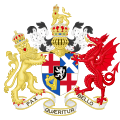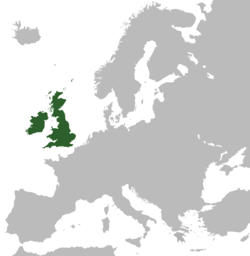The Protectorate
| Commonwealth of England, Scotland and Ireland | ||||||||||||
|
||||||||||||
|
Territory of Commonwealth in 1659
|
||||||||||||
| Capital | London | |||||||||||
| Government | Unitary parliamentary republic | |||||||||||
| Lord Protector | ||||||||||||
| • | 1653–1658 | Oliver Cromwell | ||||||||||
| • | 1658–1659 | Richard Cromwell | ||||||||||
| Legislature | Parliament | |||||||||||
| • | Upper house |
Other House (1658/1659) |
||||||||||
| • | Lower house |
House of Commons (1654–55/1656–58/1659) |
||||||||||
| History | ||||||||||||
| • | Instrument of Government | 16 December 1653 | ||||||||||
| • | Humble Petition and Advice | 25 May 1657 | ||||||||||
| • | R. Cromwell's resignation | 25 May 1659 | ||||||||||
|
||||||||||||
The Protectorate was the period during the Commonwealth (or, to monarchists, the Interregnum) when England (which at that time included Wales), Ireland and Scotland were governed by a Lord Protector. The Protectorate began in 1653 when, following the dissolution of the Rump Parliament and then Barebone's Parliament, Oliver Cromwell was appointed Lord Protector of the Commonwealth under the terms of the Instrument of Government. In 1659 the Protectorate Parliament was dissolved by the Committee of Safety as Richard Cromwell, who had succeeded his father as Lord Protector, was unable to keep control of the Parliament and the Army. This marked the end of the Protectorate and the start of a second period of rule by the Rump Parliament as the legislature and the Council of State as the executive.
...
Wikipedia


